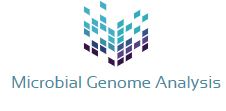Scientific Background
Mitochondria are responsible for generating more than 90% of all the cell’s energy, yet are also the major intracellular source of free radicals, highly reactive molecules that undermine cellular integrity and are capable of killing the cell. Mitochondria also hold the cellular keys that control apoptosis, the genetically-determined suicide program whereby a cell systematically dismantles itself. By elucidating how mitochondria function in terms of cellular energetics, free radical production, ion regulation, and regulation of cell death, Migenas is discovering novel targets for drug development and developing novel agents to restore mitochondrial function, and hence treat important diseases.
Mitometrics
Target Identification
Proteomics and Genomics
Mitochondria are the only structures outside of the nucleus in animal cells that contain their own DNA. This mitochondrial genome of 16.5kB encodes for the active centers of the proteins that catalyze cellular energy production, as well as the machinery required to make these proteins. In addition to these 13 critical proteins encoded by their own DNA, mitochondria also contain at least 1500 (and perhaps as many as 2000) proteins encoded by the nuclear DNA, and subsequently translocated into the mitochondria. As such, knowledge of the mitochondrial genome and proteome is crucial to understanding how mitochondria function, and how changes can contribute to disease.
Accordingly, Mitophenome has established a program to elucidate how changes in the mitochondrial DNA might be associated with different diseases. By characterizing all the single nucleotide polymorphisms in these genomes, Mitophenome scientists have been able to identify novel patterns arising from geographically distinct subpopulations, but also are beginning to reveal how changes in mitochondrial DNA may track with various diseases.
Mitophenome has also established an ambitious program to identify every protein within the mitochondria. To do this, highly-purified mitochondrial preparations are completely disassociated, and the liberated proteins then separated via several techniques in parallel. Once separated, individual proteins are then digested, and the fragments identified using mass spectrometer techniques. Our goal of completely characterizing the entire mitochondrial proteome is greatly facilitated by use of robotics and dedicated bioinformatics. Comparisons of the proteome between mitochondria from normal versus ill patients will help identify changes associated with disease, and therefore suggest potential interventional strategies.
Drug Discovery and Development
Assays
Mitophenome has implemented a number of high-throughput screening (HTS) assays that interrogate mitochondrial function from several perspectives. For example, to model the deleterious effects of excitotoxic calcium loading on mitochondrial integrity, one such HTS assay monitors mitochondrial membrane potential in intact cells using fluorescence resonance energy transfer between two dyes. Other assays are capable of monitoring mitochondrial membrane potential, calcium uptake, swelling and oxygen utilization simultaneously. Several cell based assays permit evaluation of bioenergetics under a wide variety of pathological conditions. These assays, when taken together, provide a comprehensive assessment of mitochondrial function and provide insight into mechanism of action. Compounds showing efficacy in this Mitometrics™ screening panel are subsequently examined in a variety of cytotoxicity assays pertinent to stroke and neurodegenerative diseases.
Cybrids
Mitophenome discovery and development efforts are accelerated by the use of proprietary cybrid cell lines that model mitochondrial dysfunction in disease-appropriate cellular environments. Mitochondria from both ill and healthy patients are introduced into MitoKor’s proprietary human and rodent rho0 cell lines, which are essentially mitochondrial DNA knockout cells. The mitochondrial population is allowed to expand, and the resulting cytoplasmic hybrid, or cybrid, now contains mitochondrial DNA from a patient or control but the same nuclear background. Neuron-like cells are used for neurodegenerative disease; insulin secreting and insulin responsive cells are used for NIDDM. In addition to their utility as disease-specific models for compund screening, cybrids made from diseased and healthy donors are used to identify differentially expressed genes and proteins, providing complete comparative expression profiles. MitoKor is the first company to develop cybrid models for Alzheimer’s disease, Parkinson’s disease, NIDDM, and other mitochondrial-based disorders.
Compounds
Mitgenas drug development efforts include estrogen and novel, non-feminizing, polycyclic phenolic estrogen analogs, that protect cells and mitochondria under the pathological conditions occurring during a stroke or myocardial infarction. MitoKor has entered into a strategic alliance with Wyeth Corporation related to the development of estrogens and estrogen-like compounds for treatment of Alzheimer’s disease. Wyeth is funding a Phase III clinical trial evaluating the use of estrogens in the prevention and treatment of Alzheimer’s disease in post-menopausal women. This trial is part of the Women’s Health Initiative Study, and has enrolled over 7,500 women. Mitophenome has also successfully completed a Phase I clinical trial of a non-feminizing estrogen analog.
